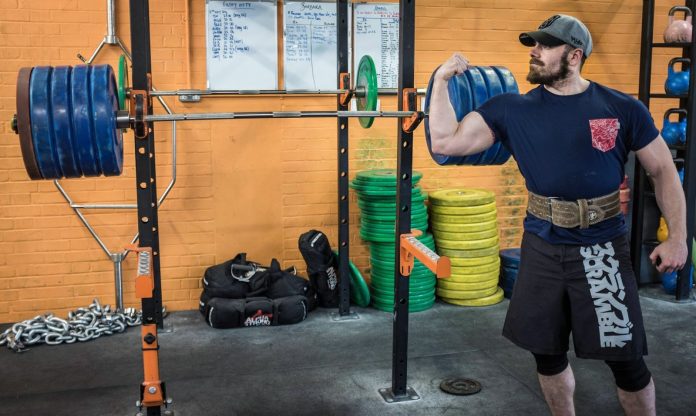
If two fighters are equal in technique, the stronger athlete is going to win. How many times have you heard this in BJJ context? While the technique is the true mark of a BJJ specialist, we cannot overlook strength. That said, BJJ strength training is essential for anyone looking to train or compete in grappling.
It is the one universal quality all athletes need to poses. To make things clear from the start, BJJ strength is very different, from say strongman strength. There’s no need for a BJJ athlete to lift three times the amount of their body weight. Strongman training and Olympic lifting are sports of their own and are not the norm for grapplers.
We’ve all felt that freakishly strong training partner whose grips you just can’t break. Furthermore, once they get a choke on you there’s no breaking out. Now, while you might not become just as strong, you’ll become strong enough to make others feel like that. Building on inch-perfect Jiu-Jitsu technique with specific strength is a foolproof way of advancing in Brazilian Jiu-Jitsu.
Correct Strength Training For Jiu-Jitsu
When two fighters have equal levels of technique and skill, the defining factor of success will be BJJ strength. Strength training is not just lifting weights to get a muscle pump. Well, not when you’re looking to compete in grappling, at least. When you are looking to develop overall athletic strength, you need the right approach. Instead of bigger biceps, you should focus on speed, agility, power, and endurance. If you do not develop adequate strength, none of these qualities are going to be adequately developed as well.
That said, grapplers must identify their weakness as well as their strengths. The style grappling along with training background is the starting point. Next, body type and weight category are very important as well. A lightweight grappler is not going to train the same as an ultra-heavyweight. After everything is in place, a solid strength training program is put together to initiate progress.
A strong grappler is always going to have an advantage over a weaker one. IF you’re the strongest competitor in your weight class, you do not need to be the tallest or heaviest one. Strength is a great equalizer that might even cover for techniques during your beginner days. With solid technique to back it up, though, BJJ strength turns in to an unfair advantage for you. Because, holding on to that Guillotine choke even if you’re not quite there, helps a lot. You’ll have time to adjust while preventing your opponent from going anywhere. On the other hand, if you’re the weaker grappler, your opponent can just push through hall your submission attempt.
Specific BJJ Strength Training
Strength training is a huge part of sports performance since the beginning of time. Even form the early days of Olympic sports, and going as far back as back in the Gladiator days, strength training is an integral part of athletic preparation. As Brazilian Jiu-Jitsu spreads across the globe like wildfire, so do related training modalities. The problem is, much of these so-called “expert” programs have nothing to do with grappling. Strength training is one of the most integral parts of a grappler’s preparation. BJJ strength training needs to be addressed accordingly, and not just taken for granted.
Depending on the length of time available, strength training needs to begin with a block of hypertrophy. Yes, you do need muscle size in order to reach increased strength levels. Furthermore, you can’t skip a joint integrity phase right after. This includes slow eccentric movement exercises with higher volume. Eccentric and plyometric exercises prime the joints for high impact collisions which are inevitable in grappling.
After the first couple of phases, it’s all about, pure BJJ strength training. The focus here is solely on maximal strength output. Work is primarily in the 85-90% of 1 repetition maximum. The range is 3-5 sets of 3-5 repetitions. To that extent the following exercises are irreplaceable when BJJ strength is the goal:
-
Squat
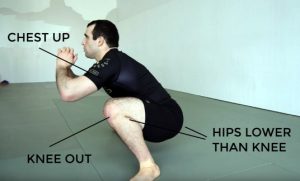
The squat is the king of all exercises. Going for heavy barbell squats is a classic method of developing crazy amounts of strength. Furthermore, there are variations that are extremely effective for developing specific BJJ strength. One such variation is the Zercher squat, a front-loaded squat that targets your whole body. You can also check out the BJJ Squats clicking on the image.
-
Deadlift
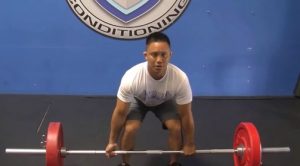
Whatever athletic endeavors you’re pursuing, doing deadlifts can only help you to achieve them faster. The deadlift works all of the muscles of the body and develops the much-valued hip power that’s essential for BJJ. Having a strong pulling musculature means you’re going to be ready to battle anyone in grappling. There’s nothing that’s going to achieve this better than deadlifts. Any deadlift variation will do, but a classic straight bar deadlift is really difficult to beat. A Trap Bar deadlift is also a great fit for grapplers.
-
Multidirectional Push
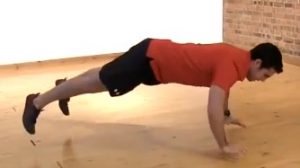
For the upper body, the first thing to remember is that you have two main planes of motion. You can push in a horizontal pattern, or in a vertical one. That said, while the bench press is a classic, there’ are better ways of developing pushing BJJ strength. For grapplers, pushups, especially weighted or gymnastic-style ones are the way to go. Conversely, handstand pushups beat and overhead press, although pressing with a kettlebell is also a good option.
-
Multidirectional Pull
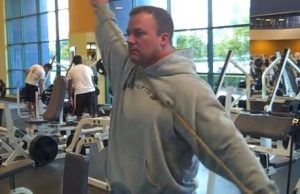
The pull is under the same rules as the upper body push. You need to develop both horizontal and vertical pulling strength. As pulling strength is really important for Jiu-Jitsu, this is a huge part of BJJ strength training. Pulling vertically is easy – nothing beats pullups. You can use any grip variation along with weight if you’re already strong. Horizontal pulling, on the other hand, has more of a crossover effect done with weights. To that extent, the barbell row is superior to any other horizontal pull. The position engages the whole body while targeting the same muscles work overtime during rolling.
-
Carry
The best overall strength and conditioning tool is carrying heavy objects. For BJJ strength training, the more varieties, the better. Farmer carries are essential, and the focus should be to go as heavy as possible. Overhead and/or rack carries are also mandatory, giving you plenty of programming options so that you don’t get bored. There’s no grappling fame without carries, so make sure you never skip this exercise!
-
Core Training
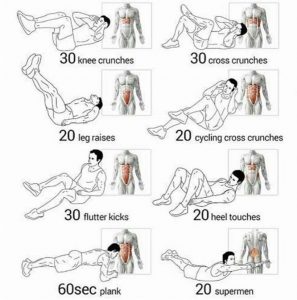
Contrary to popular belief, the core is not just comprised of the abs and lower back muscles. Everything from shoulders to hamstrings has a part to play in the core. It is important to address both flexion, extension, and rotation exercises along with isometric ones. Isometric core training includes anti-movements to all movements stated above. A strong core is crucial to every sport, and grappling martial arts are no different! Check Out this great Core exercising program.
You Might Also Be Interested In:
The Ultimate Core Exercising Workout Program
George Lockhart Nutrition & Weight Management System DVD/Book
Train Like Gordon Ryan To Get SHredded And Strong
Roger Gracie’s Pre Competition Training Routine
The Perfect Strength And Conditioning Workout For BJJ by T. Stevens
How To Train With A Stability Ball For BJJ Balance
The Best Strength & Conditioning DVD and Digital Instructionals


![Darce Choke Encyclopedia – Origins, Mechanics and Variations [2025] BJJ, choke, Brabo, BJJ Darce Choke, D'arce Choke, Darce BJJ Choke](https://bjj-world.com/wp-content/uploads/2017/11/JungPoirierLeeYahoo-218x150.jpg)







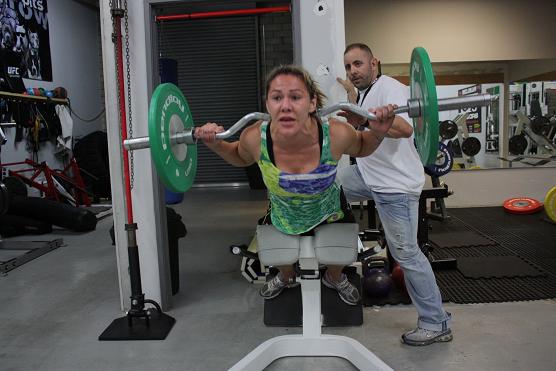


![Leg Lock Entries Helena Crevar DVD Review [2025] Leg Lock Entries Helena Crevar DVD Review](https://bjj-world.com/wp-content/uploads/2025/03/leg-lock-entries-helena-crevar-dvd-review-218x150.png)
![Special K Guard Neil Melanson DVD Review [2025] Special K Guard Neil Melanson DVD Review](https://bjj-world.com/wp-content/uploads/2025/03/special-k-guard-neil-melanson-dvd-review-218x150.png)
![Arm Bar It All Shawn Melanson DVD Review [2025] Arm Bar It All Shawn Melanson DVD Review](https://bjj-world.com/wp-content/uploads/2025/03/arm-bar-it-all-shawn-melanson-dvd-review-218x150.png)


![Advantage Over Time Outside Passing Jozef Chen DVD Review [2025] Advantage Over Time Outside Passing Jozef Chen DVD Review](https://bjj-world.com/wp-content/uploads/2025/03/outside-passing-jozef-chen-dvd-review-218x150.png)
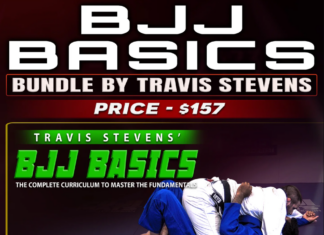
![Reverse De La Riva System Mikey Musumeci DVD Review [2024] Reverse De La Riva System Mikey Musumeci DVD Review](https://bjj-world.com/wp-content/uploads/2024/11/reverse-de-la-riva-system-mikey-musumeci-dvd-review-100x70.png)



![No-Gi Defense Xande Ribeiro DVD Review [2024] No-Gi Defense Xande Ribeiro DVD Review](https://bjj-world.com/wp-content/uploads/2024/11/no-gi-defense-xande-ribeiro-dvd-review-100x70.png)

![Knee Lever John Wayne Sweep Adam Wardzinski DVD Review [2024] Knee Lever John Wayne Sweep Adam Wardzinski DVD Review](https://bjj-world.com/wp-content/uploads/2024/12/john-wayne-sweep-adam-wardzinski-dvd-review-100x70.png)

![Just Pass Jay Rodriguez DVD Review [2024] Just Pass Jay Rodriguez DVD Review](https://bjj-world.com/wp-content/uploads/2024/11/just-pass-jay-rodriguez-dvd-review-100x70.png)
![EMU Guard 2.0 Benjamin Power DVD Review [2024] EMU Guard 2.0 Benjamin Power DVD Review](https://bjj-world.com/wp-content/uploads/2024/11/emu-guard-2-0-benjamin-power-dvd-review-100x70.png)
![A Blueprint For Smeshing Khabib Nurmagomedov DVD Review [2024] A Blueprint For Smeshing Khabib Nurmagomedov DVD Review](https://bjj-world.com/wp-content/uploads/2024/10/blueprint-for-smeshing-khabib-nurmagomedov-dvd-review-100x70.png)

![Guard Busters Bill Cooper BJJ DVD Review [2025] Guard Busters Bill Cooper BJJ DVD Review](https://bjj-world.com/wp-content/uploads/2025/03/guard-busters-bill-cooper-bjj-dvd-review-100x70.png)
![Eoghan O’Flanagan Bundle Down Right Sloppy Jiu-Jitsu Review [2024] Eoghan O'Flanagan Bundle Down Right Sloppy Jiu-Jitsu Review 2024](https://bjj-world.com/wp-content/uploads/2024/09/down-right-sloppy-jiu-jitsu-eoghan-oflanagan-bundle-100x70.png)
![Full Guard Formula James Booth DVD Review [2025] Full Guard Formula James Booth DVD Review](https://bjj-world.com/wp-content/uploads/2025/02/full-guard-formula-james-booth-dvd-review-100x70.png)


![Intro To Hip Mobility for Guard Players Joshua Presley DVD Review [2024] Intro To Hip Mobility for Guard Players Joshua Presley DVD Review](https://bjj-world.com/wp-content/uploads/2024/09/hip-mobility-for-guard-joshua-presley-dvd-review-100x70.png)




![Special K Guard Neil Melanson DVD Review [2025] Special K Guard Neil Melanson DVD Review](https://bjj-world.com/wp-content/uploads/2025/03/special-k-guard-neil-melanson-dvd-review-100x70.png)
![Dima Murovanni Kill The Collar Tie BJJ Trendsetters DVD Review [2024] Dima Murovanni Kill The Collar Tie BJJ Trendsetters DVD Review](https://bjj-world.com/wp-content/uploads/2024/09/dima-murovanni-kill-the-collar-tie-dvd-review-100x70.png)

